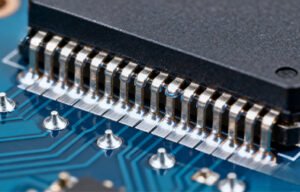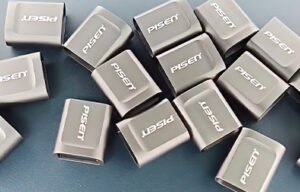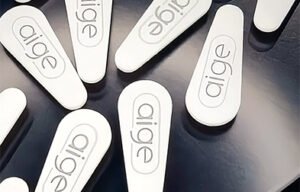Laser Marking Machines in Electronics: Latest Application Trends
Introduction
As electronic devices become smaller and production speeds increase, CCD vision laser marking machines have become indispensable in electronics manufacturing. Systems from manufacturers like JOYLASER, including fiber laser marking machines, MOPA laser marking machines, and CCD vision systems, are widely applied to PCBs, battery modules, electronic components, and housings, achieving high precision, efficiency, and traceability. This article explores the latest application trends of laser marking machines in electronics and provides practical guidance.
Why Laser Marking Machines Matter for Modern Electronics Manufacturing
In electronics manufacturing, reliable marking not only identifies components but also supports traceability, warranty service, regulatory compliance, and anti-counterfeiting. Compared with traditional inkjet systems, equipment provided by CCD vision laser marking machine manufacturers requires no consumables, has low maintenance costs, and can withstand reflow soldering, cleaning, thermal cycling, and long-term wear. Non-contact processing reduces mechanical stress and contamination risks on sensitive components, making it ideal for high-density PCB and semiconductor packaging.
Trend 1 — Vision Guided and CCD Positioning for Inline Accuracy
Vision-guided laser marking systems from CCD vision laser marking machine suppliers provide real-time positioning and automatically compensate for part misalignment or rotation. On mixed SKU production lines, CCD vision laser marking machine factories reduce fixture complexity and manual alignment, improving readability and consistency for small text and 2D codes.
Trend 2 — Flying Marking and Online Integration for Higher Throughput
Flying marking technology from flying laser marking machine producers allows parts to be marked while moving on a conveyor without stopping. By synchronizing laser scanning paths with encoder feedback, high-volume consumer electronics or battery production lines can significantly reduce per-part processing time. Modern systems offer industrial network interfaces for seamless integration with MES and automation equipment.
Trend 3 — Low Heat, Low Spatter Marking for Sensitive Components
Miniature components and heat-sensitive materials require laser marking processes to minimize the heat-affected zone. Using ultrashort pulse lasers, pulse optimization, and scanning strategies provided by fiber laser marking machine suppliers reduces spatter and thermal distortion, suitable for battery tabs, LED packages, and flexible PCBs.
Trend 4 — Color Marking and MOPA/Advanced Pulse Control
Using MOPA lasers and pulse control technology provided by MOPA laser marking machine producers, manufacturers can achieve color marking on metals and colored plastics without coatings or inks. In electronics, color marking enables functional differentiation, brand customization, and aesthetic finishes on connectors, housings, and shields.
Trend 5 — Marking Under Conformal Coatings and on Complex Surfaces
Marking on coated, encapsulated, or molded parts has become a key requirement. Lasers can mark before coating or through thin coatings, combined with 3D surface mapping and phase-correction optics, enabling high-quality marking on curved, domed, and irregular parts, reducing secondary handling and improving yield. Automated laser marking machine factories provide complete solutions.
Trend 6 — Traceability, Serialization, and Anti-Counterfeiting
Laser marking can permanently record serial numbers on PCBs, modules, and subassemblies, with camera verification and encrypted 2D codes ensuring secure supply chain management. Microscopic marks, covert codes, and variable data combined with backend systems effectively prevent counterfeiting. CCD vision laser marking machine suppliers provide compatible solutions.
Trend 7 — Miniaturization: Marking Micro Components and PCBs
Miniaturization trends require high-resolution optics, short focal lengths, and stable motion control. Specialized f-theta lenses and precision stages allow micro marking without damaging pads or traces, while enabling inline inspection. Fiber laser marking machine factories perform exceptionally in such applications.
Trend 8 — Dual-Head and Multi-Station Systems for Takt Time Optimization
Dual-head or multi-station systems can mark two areas of a part or multiple PCBs simultaneously, optimizing production takt. Multi-station distribution keeps each laser head within its optimal parameter window, improving consistency and reducing cycle time. Dual head laser marking machine producers provide efficient solutions.
Trend 9 — Energy Efficiency and Lifecycle Cost Considerations
High-efficiency fiber lasers and long-lifetime diodes reduce operating costs. Manufacturers increasingly focus on total cost of ownership, including energy consumption, maintenance, spare parts, and downtime, rather than purchase price alone. Energy efficient laser marking machine factories offer advanced equipment.
Trend 10 — AI, Inline Inspection, and Closed-Loop Process Control
AI combined with machine vision in laser marking enables defect prediction and dynamic parameter adjustment. Closed-loop control adjusts laser power and scan speed based on real-time feedback, improving mark quality and reducing operator dependence. Inline laser marking machine suppliers provide related automation solutions.
Implementation Best Practices
Define mark content, tolerance, contrast, and environmental constraints.
Perform marking trials on representative lots, including post-coating and surface treatment testing.
Integrate with MES and vision inspection to ensure per-part traceability.
Control thermal input using pulse optimization or ultrashort pulse strategies.
Maintain optical systems and software regularly to ensure long-term stability.
111-1024x458.png)



